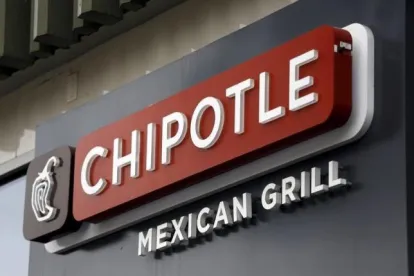The U.S. Supreme Court has been asked to fill a gaping hole in our Fair Labor Standards Act (FLSA) jurisprudence: What, precisely, is meant by “similarly situated,” as set forth in 29 U.S.C. 216(b)? The request comes in a petition for certiorari of a decision by the U.S. Court of Appeals for the Second Circuit in a wage-hour collective action against Chipotle Mexican Grill, brought by assistant managers (or “apprentices”) who contend that they were misclassified as exempt executive employees and improperly denied overtime pay. (Chipotle Mexican Grill, Inc. v. Scott (No. 20-257), petition for certiorari filed August 28, 2020).
In the absence of a meaningful definition in the statute or guidance from the Supreme Court, lower courts have been left to fashion their own tests for evaluating whether a group of employees satisfy the “similarly situated” criteria for purposes of certifying an FLSA collective action. Most federal circuits have adopted multifactor or “ad hoc” approaches, starting with the U.S. Court of Appeals for the Third Circuit. Along with the Sixth, Eighth, and Eleventh Circuits, courts in these jurisdictions take into account the ways in which putative plaintiffs are dissimilar as well as similar, along with fairness and procedural concerns, available defenses, and other considerations. The Tenth Circuit has condoned, but not required, the multifactor approach to the “similarly situated” analysis. The Seventh Circuit pulls directly from standard Rule 23 factors (predominance, most significantly). The Second Circuit, however, followed the outlier Ninth Circuit in imposing a low hurdle for FLSA certification.
The panel majority in Chipotle contends that the ad hoc approach taken by most federal circuits has “imported through the back door” Rule 23’s more demanding standard for certifying a class, for which there is no basis in the FLSA. The seven plaintiffs in this “hybrid” action sued on behalf of themselves and 516 additional employees who had opted in to an FLSA collective action; they also represented six putative classes—approximately 1,600 employees in six states—under Rule 23(b)(3). In a June 2013 ruling, the district court conditionally certified a nationwide FLSA collective. Subsequently, in a March 29, 2017, decision, the court denied Rule 23 certification, finding the plaintiffs could not satisfy predominance and superiority requirements. The court also decertified the FLSA collective action after concluding that the plaintiffs failed to show that the opt-in plaintiffs were similarly situated.
However, in an April 1, 2020, decision, a divided Second Circuit panel found that the district court erred in decertifying the FLSA collective. According to the majority, the court below had gotten the “similarly situated” analysis wrong, conflating the Section 216(b) standard with the more demanding Rule 23 criteria for class certification. By design, the Rule 216(b) hurdle is lower, Judge Chin explained, because it serves a “fundamentally different purpose[]” than Rule 23: it is “tailored specifically to vindicating federal labor rights.” In the majority’s view, unlike Rule 23 litigants, Section 216(b) plaintiffs have a “substantive ‘right’ to proceed as a collective,” and one is to be certified so long as the potential opt-in plaintiffs “share a similar issue of law or fact material to the disposition of their FLSA claims,” notwithstanding any “dissimilarities in other respects.”
Judge Sullivan, dissenting in Chipotle, argued that Section 216(b) is not so “fundamentally different” in purpose from Rule 23 as to warrant reducing the required “similarly situated” showing to a “mere formality.” His interpretation aligns with the Seventh Circuit which, in its important 2013 decision in Espenscheid v. DirectSat USA LLC, eschewed the notion that there is a meaningful rationale for adopting a distinct approach to the Section 216(b) inquiry. Notably, the panel was unanimous in finding that the district court had properly refused to certify the proposed Rule 23 classes, concluding that common questions of law did not predominate. Thus, the Second Circuit decision offers the Justices a useful framework in which to consider the interplay between Rule 23 and § 216(b), and the relative rigor applied to certification questions under the two standards.
In their petition for certiorari, the Chipotle defendants call the Second Circuit majority’s “similarly situated” standard both “incorrect and patently unworkable.” The question presented: “[w]hether a district court may consider factors other than the presence of a single material question of law or fact common to a group of employees when assessing whether the employees are ‘similarly situated’ for purposes of the collective-action provision of the Fair Labor Standards Act.”
“The confusion regarding the standard for certifying a collective action under the FLSA has festered for far too long,” the petitioners note. “This case provides the Court with an ideal opportunity to address that question for the first time, providing much needed guidance for lower courts that have been floundering in its absence.”
On the other hand, the Second Circuit’s Chipotle decision involved the decertification of a collective action that had been conditionally certified by the court; as such, the case does not tackle the more problematic issue whether a collective action should be conditionally certified in the first instance. The widely used two-stage certification framework (commonly deemed the Lusardi approach) for FLSA certification is also in dire need of Supreme Court scrutiny. With only a “modest” showing that potential opt-in plaintiffs are “similarly situated,” plaintiffs can force defendants into settling meritless claims or to engage in costly discovery and disruptive classwide litigation.
To this end, there are more promising developments for FLSA defendants in the Fifth Circuit. In a significant opinion on a matter of first impression in any circuit, a Fifth Circuit panel in In re JPMorgan Chase & Co. (No. 18-20825, February 21, 2019), ruling on interlocutory appeal, refused to allow FLSA plaintiffs to give notice of a collective action to the 35,000 current and former Chase employees in a putative 42,000-member collective. In so ruling, the appeals court rejected an approach that would conditionally certify first and wait until the step-two decertification stage to delve into the existence of the arbitration agreements.
On August 11, 2020, the Fifth Circuit, again on interlocutory review, heard oral argument in Swales v. KLLM Transport Services, a case that addresses head-on the extent to which a district court may examine the factual circumstances of whether potential opt-in plaintiffs are similarly situated before conditionally certifying a class. In Chipotle, dissenting Judge Sullivan made the important observation that “neither plaintiffs nor the court would be significantly benefited if plaintiffs were allowed to proceed collectively despite having drastically different material facts or different legal claims simply because they share a single common fact or legal issue.” During oral argument in Swales, the panel judges sua sponte made the same point.
As we await what we hope will be a grant of certiorari in Chipotle, we are cautiously optimistic that the Fifth Circuit will usher in a more workable framework for evaluating whether potential opt-in plaintiffs are similarly situated before conditional certification is granted.






 />i
/>i

